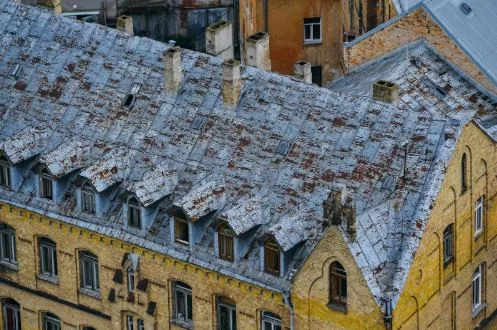Why Professional Inspections Matter After a Hailstorm
Hailstorms can leave behind more damage than you notice at first glance. From dented gutters to cracked shingles, the harm often goes beyond what the eye can see. Many homeowners assume they can spot every issue themselves, but that is rarely the case. Missing early warning signs can lead to costly repairs months or even years later. This is why professional inspections matter after a storm rolls through. An expert eye ensures nothing is overlooked, and that your home remains safe and structurally sound.
Even when hail damage on roof surfaces looks minor, there may be hidden problems beneath. Small cracks in shingles or flashing can let water seep in slowly, causing rot, mold, or weakened support beams over time. You might not realize anything is wrong until a ceiling stain appears, and by then the damage is much more expensive to fix.
The Hidden Risks of Hail Damage
The biggest issue with hail is how deceptive it can be. A roof may look perfectly fine from the ground, yet an inspector climbing up will often see cracked shingles, bruised areas, or protective granules stripped away. These tiny flaws compromise the entire roofing system, leaving your home vulnerable.
Hail also strikes vents, gutters, siding, windows, and even decks. Dents in metal gutters can create drainage problems, while damaged siding may allow water to seep behind walls. Glass windows sometimes develop stress cracks that spread over time. Without a close professional inspection, these issues may quietly worsen.
Why DIY Inspections Aren’t Enough
Climbing onto a roof is risky for the average homeowner, but the bigger issue is knowing what to look for. Most people are not trained to spot subtle but serious signs of storm damage. Missing these clues can mean the difference between a quick patch and a full roof replacement later on.
Insurance companies also rely on professional reports. If you try to file a claim without documentation from a qualified inspector, there is a good chance it will be denied or underpaid. Trained inspectors know how to provide the evidence insurers require.
What Inspectors Look For
A professional inspection goes far beyond a quick glance. Here are common areas they evaluate:
- Shingles: Looking for bruising, cracks, lifted edges, or loss of granules.
- Flashing: Checking seals around chimneys, skylights, and vents for splits or gaps.
- Gutters and downspouts: Inspecting for dents, bending, and clogs caused by debris.
- Siding: Identifying cracks, chips, or loosened panels.
- Windows and frames: Spotting stress fractures and seal damage.
- Interior spaces: Looking for water stains on ceilings or walls that indicate leaks.
Each of these small details plays a role in protecting the structure. Ignoring them leaves your home open to water infiltration and structural decay.
The Role of Insurance
One of the top reasons to schedule a professional inspection quickly after a storm is insurance coverage. Most policies require prompt reporting of damage, and waiting too long can make it harder to prove the hail caused the problem. Inspectors create a detailed report with photos, measurements, and notes that become essential when negotiating with your insurer.
Insurance adjusters may not always catch everything themselves. Having an independent report ensures you are not left with out-of-pocket costs that should have been covered. Think of it as protecting your investment and your rights as a homeowner.
Peace of Mind for Homeowners
After a hailstorm, the uncertainty can weigh heavily. You may notice a few dents in your gutters or a couple of shingles on the lawn, but wonder what else you can’t see. A professional inspection removes that stress by giving you clear answers. Either you’ll learn your roof is still sound, or you’ll catch problems while they are still manageable.
Knowing the true state of your home helps you plan. Whether it’s scheduling repairs, filing an insurance claim, or simply resting easier at night, that knowledge is valuable.
Preventing Long-Term Costs
The price of ignoring storm damage can be steep. What starts as a small leak might eventually cause mold growth, rotting rafters, or a compromised foundation if water finds its way down into walls. These repairs cost far more than an inspection or minor fix would have.
A timely inspection is one of the most cost-effective steps you can take after severe weather. Even if the inspection finds no issues, that confirmation is worth the small fee. If damage is discovered, you’ve saved yourself thousands by addressing it early.
Choosing the Right Inspector
Not every inspector is the same, so it matters who you call. Look for licensed professionals with experience specifically in storm damage. Many roofing companies offer free or low-cost inspections, but it’s important they have a track record of honesty and reliability.
Ask for references, check online reviews, and make sure they provide detailed written reports. If possible, choose someone who is familiar with your local insurance process. A good inspector is not just identifying damage, but also helping you through the next steps.
The Bigger Picture of Home Maintenance
Storm damage inspections aren’t only about emergencies. They are also part of a larger plan to maintain your home’s value and structural strength. Just as you schedule furnace cleanings or gutter clean-outs, inspections after major weather events should be routine.
Regular checkups extend the lifespan of your roof and prevent small issues from turning into major headaches. They also give you a baseline record of your home’s condition, which is useful when selling or refinancing. Buyers feel more confident knowing the roof has been regularly inspected and maintained.
Signs You Should Call Immediately
While it’s smart to schedule an inspection after any hailstorm, there are certain warning signs that call for urgent attention:
- Missing shingles or shingle pieces found in your yard.
- Water spots on ceilings or walls inside the house.
- Dented gutters or downspouts.
- Cracks in siding or windows.
- Soft or spongy spots when walking on the roof.
If you notice any of these, don’t delay. Waiting can turn a manageable issue into a full-blown crisis.
Protecting Your Investment
Your home is likely your biggest investment, and storms are one of the fastest ways that investment can be threatened. A professional inspection protects not just the structure, but also your financial stability. Roof replacements are costly, and untreated damage can reduce property value. By acting quickly after a hailstorm, you safeguard both.
Final Thoughts
Hailstorms often leave behind more damage than meets the eye, and waiting to find out can cost you dearly. Professional inspections provide clarity, protect your insurance claims, and prevent minor problems from spiraling into major expenses.
The peace of mind alone is worth it, but more importantly, inspections protect the integrity of your home. Instead of guessing about what damage might exist, let trained experts give you the certainty you need. It’s a small step that carries big rewards for your family, your finances, and your home’s future.





